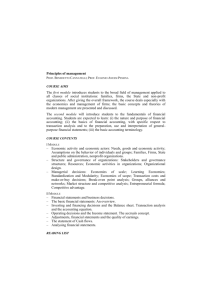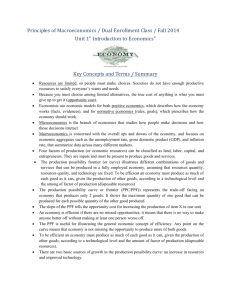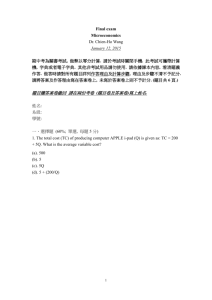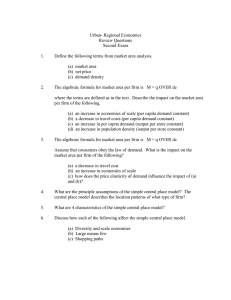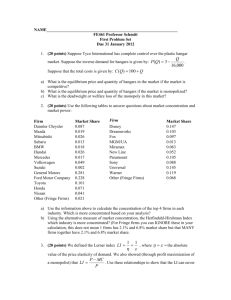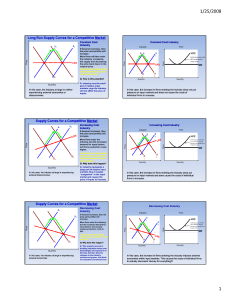The sources of economies of scale
advertisement
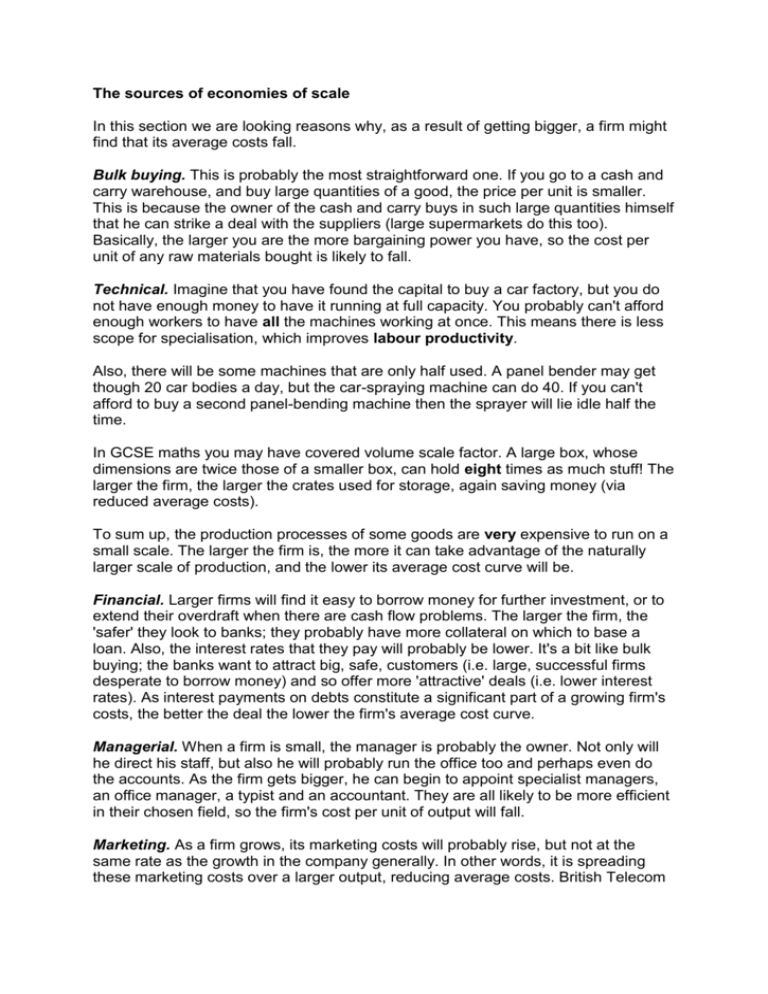
The sources of economies of scale In this section we are looking reasons why, as a result of getting bigger, a firm might find that its average costs fall. Bulk buying. This is probably the most straightforward one. If you go to a cash and carry warehouse, and buy large quantities of a good, the price per unit is smaller. This is because the owner of the cash and carry buys in such large quantities himself that he can strike a deal with the suppliers (large supermarkets do this too). Basically, the larger you are the more bargaining power you have, so the cost per unit of any raw materials bought is likely to fall. Technical. Imagine that you have found the capital to buy a car factory, but you do not have enough money to have it running at full capacity. You probably can't afford enough workers to have all the machines working at once. This means there is less scope for specialisation, which improves labour productivity. Also, there will be some machines that are only half used. A panel bender may get though 20 car bodies a day, but the car-spraying machine can do 40. If you can't afford to buy a second panel-bending machine then the sprayer will lie idle half the time. In GCSE maths you may have covered volume scale factor. A large box, whose dimensions are twice those of a smaller box, can hold eight times as much stuff! The larger the firm, the larger the crates used for storage, again saving money (via reduced average costs). To sum up, the production processes of some goods are very expensive to run on a small scale. The larger the firm is, the more it can take advantage of the naturally larger scale of production, and the lower its average cost curve will be. Financial. Larger firms will find it easy to borrow money for further investment, or to extend their overdraft when there are cash flow problems. The larger the firm, the 'safer' they look to banks; they probably have more collateral on which to base a loan. Also, the interest rates that they pay will probably be lower. It's a bit like bulk buying; the banks want to attract big, safe, customers (i.e. large, successful firms desperate to borrow money) and so offer more 'attractive' deals (i.e. lower interest rates). As interest payments on debts constitute a significant part of a growing firm's costs, the better the deal the lower the firm's average cost curve. Managerial. When a firm is small, the manager is probably the owner. Not only will he direct his staff, but also he will probably run the office too and perhaps even do the accounts. As the firm gets bigger, he can begin to appoint specialist managers, an office manager, a typist and an accountant. They are all likely to be more efficient in their chosen field, so the firm's cost per unit of output will fall. Marketing. As a firm grows, its marketing costs will probably rise, but not at the same rate as the growth in the company generally. In other words, it is spreading these marketing costs over a larger output, reducing average costs. British Telecom has loads of adverts on the TV, but does it really have more than it did, for example, five years ago? The sources of diseconomies of scale In this section we are looking at reasons why, as a result of getting too big, a firm might find that its average cost rises. As one can see from the diagram above, this only tends to happen to firms that are very large. These firms tend to have benefited from economies of scale. They reach the optimum point (the minimum of the long run average cost curve), but then get so big that for various reasons (below) they may find their average costs rising. Managerial. This is the main point. As firms get really big, the men (and women) at the top become more remote. They are not so well informed as to how their large numbers of workers are performing. I would not be surprised if some Virgin employees slip off for a two hour lunch occasionally, especially if they get on with their immediate boss quite well, but does Richard Branson know about this? In a small firm the boss can control every element of the business. Branson cannot do that anymore. Obviously some system of continual appraisal would be required so that every level of management is kept on its toes. There may be communication problems as well. The top managers may keep an eye on the middle managers, who look after the factory managers, who in turn supervise the workers. But how quickly (if at all) will a good idea from the factory reach those who make the decisions? There can be so much 'red tape' and paperwork that very little work actually gets done! Geography. Some textbooks use this point. Bigger firms often have bases in many parts of the UK, or even internationally. The huge increase in their transport costs and costs of communication may cause their average cost curve to rise. The difference between internal and external economies of scale The sources of economies and diseconomies of scale above were all internal. This means, in a sense, internal to the firm. They were all factors that were a result of the firm in question growing within an industry. If the whole industry grows for some reason, then every firm within that industry will benefit from lower average cost. Diagrammatically, this would be illustrated by a downward shift in each firm's long run average cost curve. So what might happen that would benefit every firm within an industry? A good example is the desktop computer market. All firms in the industry have benefited from the rapid strides that have been made technologically, especially with the processor speeds. Another example is linked to training. Recently, the government have invested a lot of money into increasing the number of nurses in NHS hospitals. A beneficiary of this action might be a firm in the private health market. Having been trained at the government's expense, a newly qualified nurse might apply for a job at a private hospital where the wages, and working conditions, are better.


